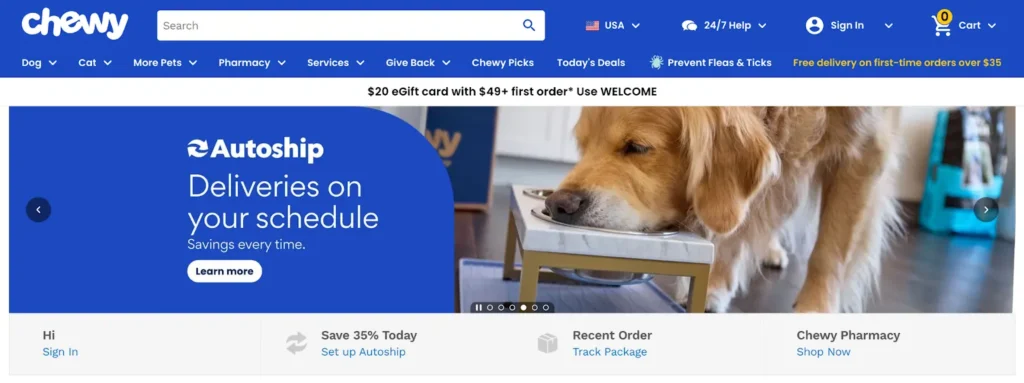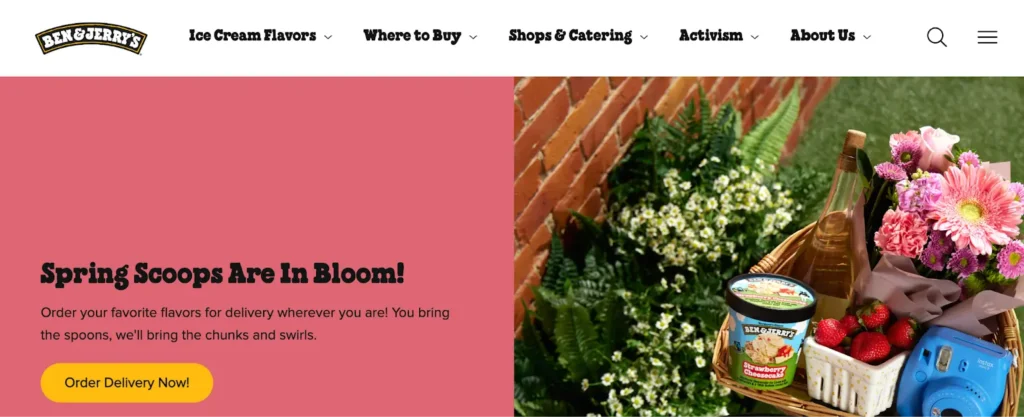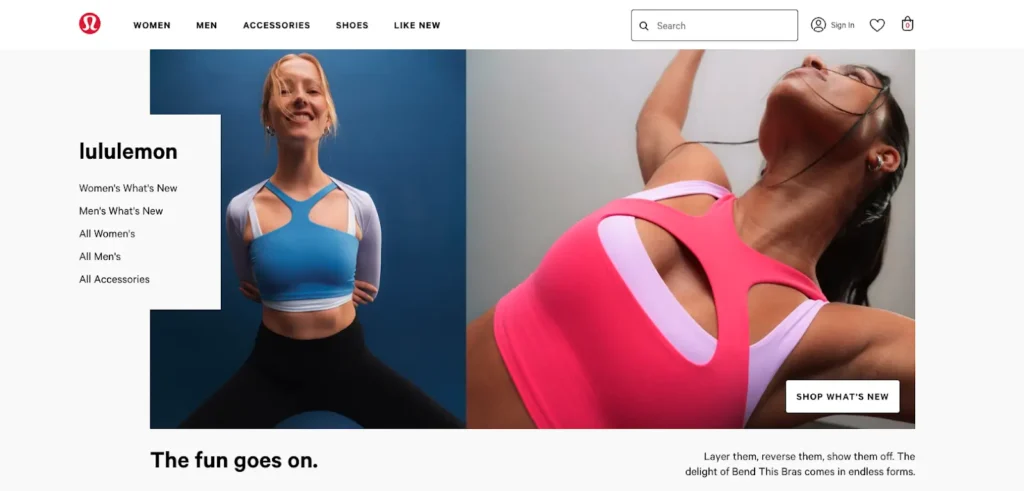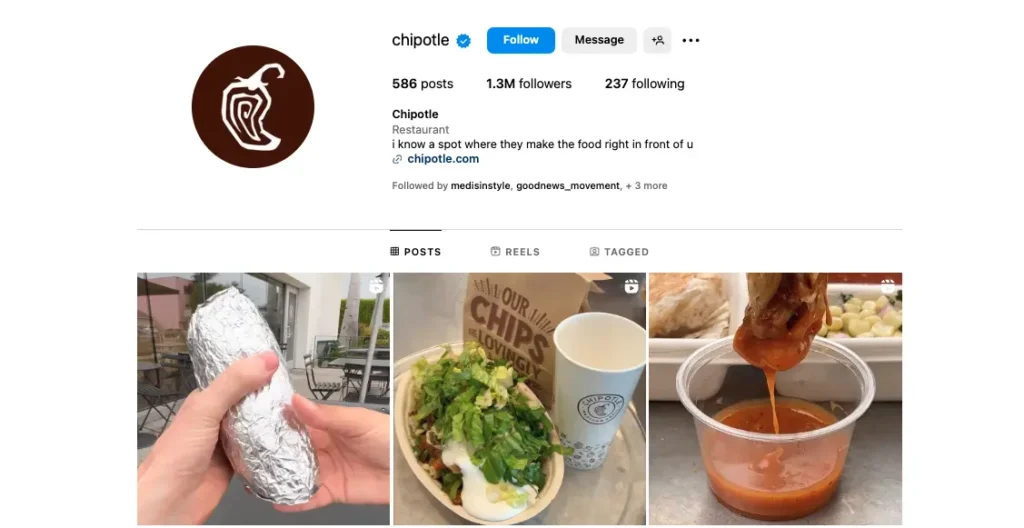81% of consumers need to trust a brand to consider buying from it. This explains why 60% of all global marketing budgets will go toward digital branding efforts in 2024.
Without a strong brand identity that consumers can trust, your sales will suffer.
This is a challenge in any industry, but it’s especially critical in fast-moving, regulated sectors like consumer goods. High levels of competition, strict compliance standards, saturated markets … Consumer goods companies have their work cut out when it comes to differentiating their brand and building trust.
An effective brand strategy is your secret weapon here. But how can you build a successful one?
I’ve handpicked eight of the best brand strategy examples from the consumer goods industry and why they work. Keep reading if you’re a brand strategist, creative, marketer, or business owner in the consumer goods industry looking to build your own killer brand strategy.
What is brand strategy?
Brand strategy is the process of building a distinctive and cohesive identity for your company that aligns with your mission, values, culture, and goals.
The first step is researching your target audience and their needs. You can use this data to create a brand identity that resonates with them on an emotional level. That way, they instantly recognize your content and products and trust your brand.
A stellar brand strategy includes:
- Brand voice and personality
- Values
- Unique value proposition
- Visual identity and brand image
- Positioning
When done right, your brand strategy can boost brand awareness, build customer trust, and drive sales.
Supercharge your marketing reviews
Share, review, and approve all your content in one place with Filestage.
8 best brand strategy examples from the consumer goods industry
Whether you sell dog treats or high-end leggings, the trick to a solid brand strategy is knowing your audience, your product, and your unique value proposition. When you nail that, well the rest is just the cherry on top.
Want proof? Here are some of the most successful brand strategy examples and what we can learn from them.
1. Old Spice – using brand personality to reach a new audience
I have a confession to make. I love the smell of Old Spice. But even I have to admit that for a long time, Old Spice was a little … well, old-fashioned.
So, how did your grandpa’s favorite toiletry brand make an epic comeback with a viral Super Bowl ad?
It shed its heritage brand persona and turned up the funny.
Back in 2010, the Old Spice team discovered that women make 60% of body wash purchases. And it took this to the bank, launching its “The Man Your Man Could Smell Like” campaign on the Super Bowl weekend.
It was a hit, racking up over 55 million views. And the brand kept the momentum going with the “Response” campaign, where it replied to fans and celebrities based on real questions from Reddit, Twitter, and Facebook.
By July 2010, sales had doubled, and a fresh new Old Spice was born. Who doesn’t love a brand glow-up?
2. Chewy – the brand that truly cares

The pet food industry was valued at US $102,180 million in 2023, but how can you corner the market?
I suggest taking a leaf out of Chewy’s book.
Let’s rewind back to 2011, when two friends dropped out of college to start their own online pet food business. The pair tried to raise money. But investors shut them down time and time again, claiming that Amazon was already established in the market.
Fast forward five years and Chewy is the biggest online pet food retailer in the US. But how?
Was it cheaper? No.
Did it sell special, niche pet food? Nope.
What about superfast Prime delivery? Still no.
The difference was an elite brand strategy that focused on personalized customer service. In a sea of faceless giants, Chewy was your good pal and fellow pet lover.
Its brand strategy pinpoints exactly who its audience is and speaks directly to them. For example, it hires artists to paint portraits of its users’ furry friends and mails them to unwitting customers.
When a customer’s pet passes away, Chewy sends flowers and a condolence note. And if you accidentally buy the wrong food for your pooch, customer service will refund you and donate it to a local pet shelter.
It may not be a cost-effective strategy, but Chewy has found a way into its customers’ hearts. And when we consider how much a dog owner will spend on food over their pet’s lifetime, it really pays to go that extra mile for your consumers.
When it comes to our pets, kids, and health, most of us make purchasing decisions based on which brand actually cares about us. And that’s Chewy.
3. Ben & Jerry’s – wins hearts with strong brand values

Who knew ice cream could be so political?
Ben & Jerry’s started out back in 1978 when two pals built their own ice cream business in a Vermont gas station.
The brand hit the big time thanks to its unique flavors, socially-conscious brand strategy, and playful personality.
When its competitors started prioritizing low prices, Ben & Jerry’s stuck with its focus on high-end product quality. This differentiated the brand in a crowded market. It was also an early social media adopter, using its playful persona to build a cult following.
But what really sets Ben & Jerry’s brand strategy apart is its commitment to social justice.
Ben & Jerry’s has a clear purpose: make excellent ice cream in the most socially-conscious way possible. That means prioritizing fair trade ingredients and advocating for social movements.
This core value resonates with the brand’s key demographic, creating an emotional connection that goes far beyond ice cream.
And I’m not just saying that because I’m a Chunky Monkey superfan, I promise.
4. Doritos – positions itself as a brand “for the bold”

Bold flavors, a unique shape, edgy ad campaigns … Doritos has been killing the brand strategy game since the sixties.
Aside from a great product (I’m a Cool Ranch gal), the success of Doritos’ marketing campaign boils down to a few key elements:
- Doritos does in-depth market research to get to know its Gen Z audience and speaks directly to them with its bold marketing campaigns
- The brand represents its audience by regularly introducing experimental new flavors that cater to their adventurous taste buds
- Doritos dominates social platforms with its interactive campaigns, UGC, and viral TikTok challenges
And let’s not forget experiential marketing. Doritos sponsors music festivals, sporting events, and other interactive experiences that resonate with its audience and build a lasting brand impression.
Considering 70% of users become regular customers after attending an experiential marketing event, that’s a pretty great strategy.
5. Marmite – embraces the hate

Marmite has been using the same campaign for thirty years. And that’s because it’s pure genius. I can’t think of any other company in the world with a stronger brand identity: you either love it or you hate it.
Rather than trying to appeal to everyone or brush over the fact that some people absolutely hate the product, Marmite leans in. And it continues to lean in with everything it does.
Take its Christmas lights sponsorship back in 2012. Marmite employed its usual “love it or hate it” tactics and, sure enough, divided the UK. For every person who criticized it for having nothing to do with Christmas, someone else praised it for the exact same reason.
There’s a lesson here in brand consistency, owning your identity, and turning criticism into engagement.
As for me, I may be a hater, but I love the brand strategy.
⭐ Bonus read: Product branding: A survival guide (+ 5 best examples)
6. The Ordinary – a no-nonsense brand strategy you can trust
Flashy celebrity endorsements, puffed-up product claims, million-dollar ad campaigns … It’s hard to stand out in the skincare industry.
But one brand is doing just that: The Ordinary.
Its marketing strategy is all about accessibility and effectiveness, shunning all the bells and whistles we’ve come to expect from skincare brands.
That means simple packaging that focuses on the product ingredients and brilliantly simple advertising.
The Ordinary’s brand strategy differentiates it from its competitors by taking a transparent, no-nonsense approach. This is a fresh take in an industry rife with false advertising issues.
We see this strategy play out with its straightforward product names, pared-back packaging design, and top-notch use of user-generated content on social media.
Take a look at how its latest ad cuts through the noise with its simple and authentic message.

7. Lululemon – builds a community like no other

The year is 1998. Chop Wilson opens his first activewear store, Lululemon, in Vancouver, Canada. His target market is women looking for high-end yoga pants.
Fast forward to 2024, and Lululemon is the most successful high-end yoga brand in the world. But how did it get there?
It started with a really strong brand identity. Lululemon is more than a brand, it has successfully positioned itself as a community of people connected by their passion for living a healthy, active life.
Its core values and mission are reflected in everything from its brand logo to its products to its customer-centric social media content. And these values resonate with its target audience. For instance, its commitment to sustainability and ethical practices.
But the biggest driver of Lululemon’s ongoing success is its focus on community. Grassroots marketing tactics using local ambassadors have helped it build a strong community of brand loyalists who are happy to pay more for its products.
Naturally, it partners with yogis and health influencers who perfectly represent the brand. Lululemon also made the genius move to create its own trademarked fabric.
Its innovative product materials and social media strategy hone in on the brand’s audience: the yogis. As a result, it never misses.
8. Everlane – disrupts with its unique value proposition

The fashion industry has long been on the receiving end of questions about supply chain ethics and high markups. This leads to consumer distrust.
And the tides are turning, as 55% of today’s consumers are interested in purchasing sustainable clothing. Essentially, we want to know that the brands we support use ethical labor and that we’re not being ripped off.
Everlane answers these very real concerns.
The ethical clothing company’s mission is “radical transparency.” That’s the driving force behind the brand’s unique value proposition: it shows the true cost of making each product (before the markup).
This is a stroke of genius in a broken industry. Everlane’s customers can see exactly how much their clothing costs to make, building brand trust.
Every inch of Everlane’s strategy aligns with its brand vision and core values. From its clean and clear design to its transparent communication. Thanks to these touches, consumers are happy to pay premium prices for Everlane products because they believe in its message.
Honorable mention: Just Eat
It may not technically be in the consumer goods industry, but this brand’s strategy is so good it deserves a special shout-out.

70% of British consumers associate the sentence “did somebody say” with Just Eat. Now that’s how you know your marketing strategy is working.
Thanks to its catchy jingle, celebrity-endorsed ads, and distinctive logo, the food delivery company has become one of the best brand strategy examples of the decade.
I mean, what other company has given us Snoop Dogg rapping about munching on sushi? Just Eat’s brand strategy has struck gold, finding that sweet spot with its target audience. As a result, it’s stuck with its “did somebody say” marketing campaigns since 2020 (if it ain’t broke …)
The key is to stay close to your customers. And it never hurts to get Katy Perry to sing about a curry in a hurry.
How to build a rock-solid brand strategy
Before you go forth and slay your own brand strategy, let’s have one final huddle to talk tactics. Based on these eight brand strategy examples, here are the top lessons for you to take home. 💡
1. Find your brand’s purpose
Research shows that brands with an articulated purpose tend to grow twice as fast as those without one.
So, take a leaf out of Everlane’s book and find your brand purpose. Once you’ve got it, use it as your North Star to guide you as you refine your brand message.
2. Build a strong visual identity
Over half of brand first impressions are visual. And even more interestingly, the color palette you choose can increase brand recognition by as much as 80%.
What I’m getting at here is that your brand’s visual identity matters. Once you have a well-established visual identity, you can easily create various marketing assets, from video ads to promotional catalogs.
That’s why Doritos’ distinctive triangular logo and bold color palette work so well. They reflect the brand’s feel-good personality and are instantly recognizable.
And you know when you’ve really hit the big time? When you don’t even need your branding anymore, the shape of your product is enough. That’s what Doritos did with its 2019 “anti-ad campaign.” A Gen Z’s dream.
3. Make an emotional connection
94% of consumers say they recommend brands they connect with emotionally. So if you want people to love your brand, it’s time to become besties with your customers.
Think about Lululemon. Its customers are famous for their brand loyalty and advocacy. Here’s how you can emulate its success:
- Personalized marketing and offers
- Community building and a strong UGC strategy (user-generated content can boost brand engagement by 28%)
- Consistent brand storytelling (this can lead to a 20% increase in brand value)
AI marketing tools like Hubspot and Sprout Social can help you build personalized relationships with your audience.
4. Brand actions matter
Many consumers take action (either positive or negative) based on a brand’s behaviors. In other words, your actions matter.
Stunts like making fun of your competitors can unravel even the best brand strategy. In fact, one study suggests that taking cheap shots at their competitors online can negatively impact your consumers.
It’s all about finding the line between provocative (think Marmite and Doritos) while still upholding your own brand values.
🚀 Extra reading: 7 tactics for effective corporate brand management
5. Nail your social game
77% of consumers prefer buying from brands they follow on social media. Now that’s a pretty compelling incentive to go big with your social media strategy.
Fast food chain Chipotle is a great example.
Known as the meme King, its social accounts are filled with hilarious, on-brand content. From product hacks to staff BTS to just plain silliness. And when there’s a cultural shift, you know Chipotle will be talking about it on socials.
This strategy helps keep the brand close to its target audience.

6. Set up a seamless review and approval process
Maintaining brand consistency across all platforms can increase revenue by as much as 23%. Unfortunately, the risk of errors or discrepancies is high when producing large volumes of branded content. Especially in a regulated industry like consumer goods.
Inconsistent branding strategies, messaging, or just a big fat typo can cost you sales, customer loyalty, and company reputation. 😱
That’s why a watertight review and approval process is your best friend.
It streamlines your creative review workflows, making sure all your branded content is up to standard (and compliant).
Online proofing software like Filestage automates this process for you, so you can cut approval times by 30% and easily flag inconsistencies in your creative content.
Our CEO walks you through how it works in this quick video.
Here’s what you can do with Filestage:
- Make sure all your content aligns with your brand guidelines
- Set up custom reviewer groups to share their feedback on assets at the right stage of the design process
- Leave annotated feedback on branded images, videos, artwork, and social content
- Compare document versions side-by-side to visualize all changes to your materials
- Manage version control so old iterations never make it to the approval stage
- Free up your inbox by consolidating all feedback in one centralized platform
Final thoughts
With these excellent brand strategy examples in your back pocket, you’re ready to pull an Old Spice and take your brand to new heights. The pillars of a stellar strategy are finding the right message, brand voice, and identity. Once you have those sorted, it’s all about consistency.
That’s where a creative review and approval platform comes in. It can automate the review process and help reduce inconsistencies in your branded content. Plus, you can cut approval times by as much as 30%.
If you’re ready to optimize your review workflows and reduce compliance slipups, start your free Filestage trial today.








